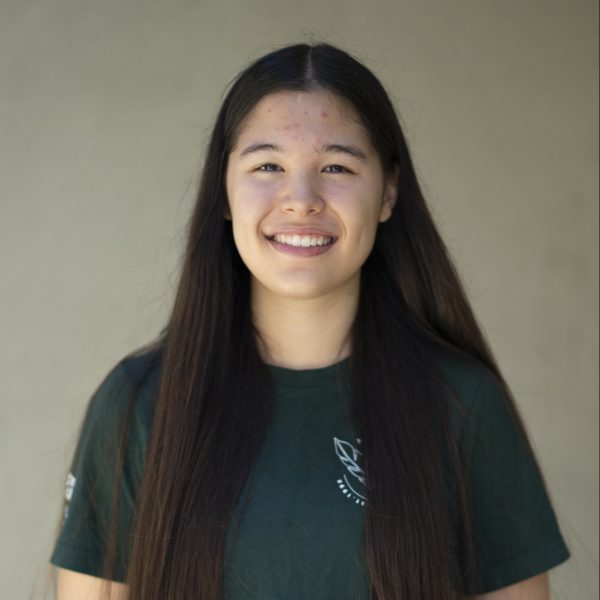Standardize sleep with year round standard time
Year round daylight saving time misaligns circadian rhythm
Despite the arguments for and against changing to daylight saving time year-round, right now, it is not an option due to federal law, which requires states to either continue with the biannual time change or stay on standard time. Currently, Arizona, with the exception of the Navajo Nation, and Hawaii are the only two states which observe standard time for the full year.
Although daylight saving time started on March 13, I still feel the after effects much later — my sleep cycle has not adjusted to the forward shift yet. Unfortunately, I still have to wake up at the same time every day for school, which means I receive fewer hours of precious sleep.
March 13 marked the switch from standard time to daylight saving time, springing the clock forward one hour and adding another hour of light to the afternoon.
Two days after the time change, on March 15, the Senate unanimously passed the Sunlight Protection Act, which would make daylight saving time permanent year-round and will go into effect in November 2023. In order to become law, the bill still needs to go through committee, pass the House of Representatives with a majority and obtain the approval of President Joe Biden, who can then sign the bill. States such as California, Alabama and South Carolina have tried to make daylight saving time permanent, but none of these legislations have become laws yet.
Similar to the Senate, the average American holds disdain for the time change; according to a 2019 poll by AP News, seven out of 10 American respondents disliked the change in time. Out of that seven, about 43.7% prefer daylight saving time and 56.3% would rather have standard time, so there is still discussion on which time schedule to keep. The switch to daylight saving time increases the number of strokes by 8% for two days after the change, according to a study which examines a decade of stroke history in Finland. Also, the number of fatal car accidents rises by 6%, according to a study which looked at motor vehicle crashes across all U.S. states from 1996 to 2017. The study estimated that abolishing daylight saving time could prevent about 28 accidents per year.
Now comes the question of which schedule we keep: standard time or daylight saving time. Personally, although I enjoy arriving at home when there’s still daylight outside, I value my sleep more than I value a brighter evening.
Often, I lay in my bed at night checking the clock every 10 minutes, waiting for time to pass by and hoping that I’ll be tired soon. Sometimes, I occupy myself with my phone until I get tired, which can waste up to an hour of valuable time while I could be sleeping. Just as quickly as standard time came around in the fall, it passed even quicker. Although my clock says it’s midnight, my body still thinks the time is 11 p.m. This feeling of restlessness isn’t just because of the impending Advanced Placement (AP) exams though.
According to a statement by the American Academy of Sleep Medicine, daylight saving time causes a misalignment of our circadian rhythm. The extra hour of daylight in the afternoon in combination with the darker mornings shifts our circadian rhythm to later in the day, but obligations such as work and school do not accommodate for this change. Standard time makes waking up a smoother transition.
An argument that often comes up in favor of daylight saving time is that it saves energy, but this claim is minorly beneficial at best, shown by both a nationwide experiment in 1974, which had a negligible impact on energy savings, and a recent study from 2018, which found a 0.34% energy decrease.
Although the Sunlight Protection Act has gained bipartisan support with unanimous approval from the Senate, the U.S. has previously tried year-round daylight saving time, and it quickly lost public approval after several months.
In January 1974, former President Richard Nixon signed the Emergency Daylight Saving Time Energy Conservation Act, which did exactly what the Sunlight Protection Act could do: make daylight saving time permanent. This expected two-year-long trial only lasted nine months because the House and the Senate voted in October 1974 to repeal the law and bring back standard time by popular demand. An article from the New York Times written after the reversal documented the public approval rate, which started at 79% in December of the previous year and fell to 42% in February, only one month after the bill became law.
Despite the arguments for and against changing to daylight saving time year-round, right now, it is not an option due to federal law, which requires states to either continue with the biannual time change or stay on standard time. Currently, Arizona, with the exception of the Navajo Nation, and Hawaii are the only two states which observe standard time for the full year.
Standard time more closely aligns with our natural circadian rhythm and most Americans dislike the change, so the U.S. should follow in the steps of Arizona and Hawaii and oppose the Sunlight Protection Act. Keeping standard time year round is better than keeping daylight saving time year round.

Margaret Cartee 12) is a co-managing editor for Harker Aquila, and this is her fourth year on staff. This year, Margaret wants to do more illustrations...

Angelina Hu (12) is the co-editor-in-chief of the TALON Yearbook, and this is her fourth year on staff. This year, Angelina wishes to meet all of her deadlines...


















![“[Building nerf blasters] became this outlet of creativity for me that hasn't been matched by anything else. The process [of] making a build complete to your desire is such a painstakingly difficult process, but I've had to learn from [the skills needed from] soldering to proper painting. There's so many different options for everything, if you think about it, it exists. The best part is [that] if it doesn't exist, you can build it yourself," Ishaan Parate said.](https://harkeraquila.com/wp-content/uploads/2022/08/DSC_8149-900x604.jpg)




![“When I came into high school, I was ready to be a follower. But DECA was a game changer for me. It helped me overcome my fear of public speaking, and it's played such a major role in who I've become today. To be able to successfully lead a chapter of 150 students, an officer team and be one of the upperclassmen I once really admired is something I'm [really] proud of,” Anvitha Tummala ('21) said.](https://harkeraquila.com/wp-content/uploads/2021/07/Screen-Shot-2021-07-25-at-9.50.05-AM-900x594.png)







![“I think getting up in the morning and having a sense of purpose [is exciting]. I think without a certain amount of drive, life is kind of obsolete and mundane, and I think having that every single day is what makes each day unique and kind of makes life exciting,” Neymika Jain (12) said.](https://harkeraquila.com/wp-content/uploads/2017/06/Screen-Shot-2017-06-03-at-4.54.16-PM.png)








![“My slogan is ‘slow feet, don’t eat, and I’m hungry.’ You need to run fast to get where you are–you aren't going to get those championships if you aren't fast,” Angel Cervantes (12) said. “I want to do well in school on my tests and in track and win championships for my team. I live by that, [and] I can do that anywhere: in the classroom or on the field.”](https://harkeraquila.com/wp-content/uploads/2018/06/DSC5146-900x601.jpg)
![“[Volleyball has] taught me how to fall correctly, and another thing it taught is that you don’t have to be the best at something to be good at it. If you just hit the ball in a smart way, then it still scores points and you’re good at it. You could be a background player and still make a much bigger impact on the team than you would think,” Anya Gert (’20) said.](https://harkeraquila.com/wp-content/uploads/2020/06/AnnaGert_JinTuan_HoHPhotoEdited-600x900.jpeg)

![“I'm not nearly there yet, but [my confidence has] definitely been getting better since I was pretty shy and timid coming into Harker my freshman year. I know that there's a lot of people that are really confident in what they do, and I really admire them. Everyone's so driven and that has really pushed me to kind of try to find my own place in high school and be more confident,” Alyssa Huang (’20) said.](https://harkeraquila.com/wp-content/uploads/2020/06/AlyssaHuang_EmilyChen_HoHPhoto-900x749.jpeg)




